
Cyberhate
Cyberhate
The Far Right in the Digital Age
Edited by
James Bacigalupo, Kevin Borgeson,
and Robin Maria Valeri
LEXINGTON BOOKS
Lanham Boulder New York London
Published by Lexington Books
An imprint of The Rowman & Littlefield Publishing Group, Inc.
4501 Forbes Boulevard, Suite 200, Lanham, Maryland 20706
www.rowman.com
86-90 Paul Street, London EC2A 4NE, United Kingdom
Copyright 2022 by The Rowman & Littlefield Publishing Group, Inc.
All rights reserved. No part of this book may be reproduced in any form or by any electronic or mechanical means, including information storage and retrieval systems, without written permission from the publisher, except by a reviewer who may quote passages in a review.
British Library Cataloguing in Publication Information Available
Library of Congress Cataloging-in-Publication Data
Names: Bacigalupo, James, 1987 editor. | Borgeson, Kevin, editor. | Valeri, Robin Maria, editor.
Title: Cyberhate : the far right in the digital age / edited by James Bacigalupo, Kevin Borgeson, Robin Maria Valeri.
Other titles: Cyber hateDescription: Lanham : Lexington Books, 2022. | Includes index. | Summary: Cyberhate: The Far-Right in the Digital Age explores the online world of right-wing political extremism through the propaganda, funding mechanisms, online subcultures, violent movements, and the ideologies that drive itProvided by publisher.
Identifiers: LCCN 2021045359 (print) | LCCN 2021045360 (ebook) | ISBN 9781793606976 (cloth) | ISBN 9781793606983 (epub)
Subjects: LCSH: Hate crimesLaw and legislation. | CyberterrorismLaw and legislation. | Right-wing extremists.
Classification: LCC KZ7177.H38 C93 2022 (print) | LCC KZ7177.H38 (ebook) | DDC 345/.025dc23/eng/20211013
LC record available at https://lccn.loc.gov/2021045359
LC ebook record available at https://lccn.loc.gov/2021045360
 The paper used in this publication meets the minimum requirements of American National Standard for Information SciencesPermanence of Paper for Printed Library Materials, ANSI/NISO Z39.48-1992.
The paper used in this publication meets the minimum requirements of American National Standard for Information SciencesPermanence of Paper for Printed Library Materials, ANSI/NISO Z39.48-1992.
Contents
James Bacigalupo, Kevin Borgeson, and Robin Maria Valeri
Michael Hoffman
Robin Maria Valeri
Janine Fodor
John Bambenek
Michael Loadenthal, Samantha Hausserman, and Matthew Thierry
Kevin Borgeson and James Bacigalupo
James Bacigalupo and Kevin Borgeson
James Bacigalupo
James Bacigalupo, Kevin Borgeson, and Robin Maria Valeri
Unfortunately, there is no shortage of hatred on the Internet. Technically speaking, the term cyberhate can be a reference to any form of hate spewed online. As the subtitle suggests, this book has a particular focus on a type of hate that has all too often transcended the World Wide Web and made its way into the physical world in the form of extremist violence. We are focusing on far-right political extremism and its relationship with the Internet. While those on the far right do not have a monopoly on Internet-based hate, they have been particularly savvy, utilizing online communications since 1984 (Berlet, 2001), and effectively putting it to use ever since. Of those who have put a definition to the concept of cyberhate, Quandt and Festl (2017) most closely describe the term as it is used throughout this book:
various forms of online communication initiated by hate groups with the purpose of attracting new members, building and strengthening group identity, coordinating group action, distributing propagandistic messages and indoctrination, provoking counterreactions as part of propagandistic campaigns, and attacking societal groups and individuals with hateful messages. (p. 1)
We would modify this definition slightly to recognize that it is not just hate groups that initiate the communication; it may also be individuals advocating on behalf of a political ideology or movement. The necessity of this project was made clear after a series of deadly far-right attacks that had an indisputable link to the Internet. Cyberhate: The Far Right in the Digital Age explores how right-wing extremists operate in cyberspace by examining their propaganda, funding, subcultures, movements, offline violence, ideologies, as well as the legal and cultural responses to its presence.
The book begins with Dr. Michael Hoffman explaining what cyberspace is, and how it works. This chapter provides a basic understanding of a range of topics including threats and protective measures encountered in cyberspace. In . He includes a description of popular far-right commentators, groups, and channels that are funded via bitcoin.
The book then moves to some of the most extreme movements on the Internet, focusing on specific groups, individuals, and their acts of violence. Unlike the propaganda that Dr. Valeri covered in , Dr. Michael Loadenthal, Samantha Hausserman, and Matthew Thierry conduct both a visual and textual analysis of the groups propaganda, and explain accelerationism, the strategy that Atomwaffen hopes will bring about the collapse of the U.S. government.
Relying heavily on the manifestos and other correspondence posted on the Internet by recent perpetrators of mass murder, , where Bacigalupo and Dr. Borgeson focus on the alt-right, an online far-right movement that was unique in its ability to break into the mainstream. This chapter includes a content analysis of alt-right preferred webpages. The book concludes with Bacigalupo discussing the response to cyberhate, focusing on issues such as censorship, law enforcements role, and the current political climate that extremism is thriving in.
References
Berlet, C. (2001, April). When hate went online. Paper presented at the Northeast Sociological Association Spring Conference, Fairfield, CT.
Quandt, T., & Festl, R. (2017). Cyberhate. In P. Rossler (Ed.), The international encyclopedia of media effects. Malden: Wiley-Blackwell.
Chapter 1
Welcome to Cyberspace
Michael Hoffman
Welcome to cyberspace! As we enter the third decade of the second millennium, the world of cyberspace is having an increasingly profound impact upon our lives. Much of this impact has undoubtedly been positive. Indeed, cyberspace has provided a medium to support beneficial research, helped connect people from around the globe, and has made information readily accessible to billions of people. There is, however, a dark side to cyberspace. Cyberspace has been used by individuals and groups to spread cyberhate (Coliandris, 2012). It has also enabled cyberbullying and has resulted in numerous breaches of individual privacy. Cyberspace is much like the real world, with both benevolent and malicious actors at work. This chapter will serve as an introduction to cyberspace, including defining what is meant by the term cyberspace, providing a basic understanding of how cyberspace works, detailing a review of how we navigate cyberspace, examining the role social media plays in cyberspace, and finally discussing the threats and protective measures encountered in cyberspace.
CyberspaceWhat Is It?
Before we delve more deeply into the ramifications of our increasing reliance on cyberspace, we should first define what cyberspace is, and what it is not. First, cyberspace is not the Internet. The Internet is a set of computers and other electronic devices that communicate using Internet Protocol (IP) (Moschovitis et al., 1999). Cyberspace, by contrast, can be thought of as the information contained by all of the devices connected to the Internet. Cyberspace is made possible by the Internet, but they are not synonymous. Similarly, the World Wide Web is also not the same as cyberspace. The World Wide Web is a system that allows for the nonlinear storage, indexing, and retrieval of information using Hypertext Transfer Protocol (HTTP) and Hypertext Markup Language (HTML) (Moschovitis et al., 1999). For example, websites such as ESPN.com and CNN.com are part of the World Wide Web. As such, the World Wide Web is part of cyberspace, but cyberspace includes much more. As previously mentioned, cyberspace is inclusive of all of the information accessible via the Internet. Certainly websites on the World Wide Web are included in cyberspace but so too would information stored on mobile devices such as smartphones, wearable technology including fitness trackers, and Internet-connected appliances. Yes, your smart television is part of cyberspace!
Next page
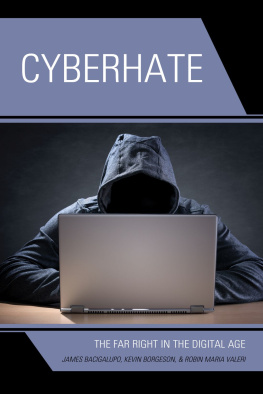


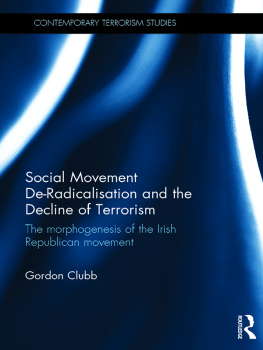
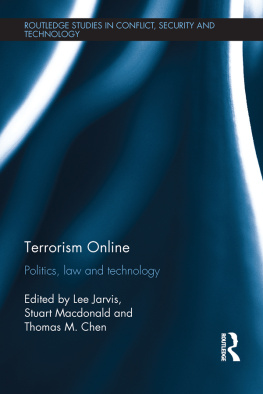
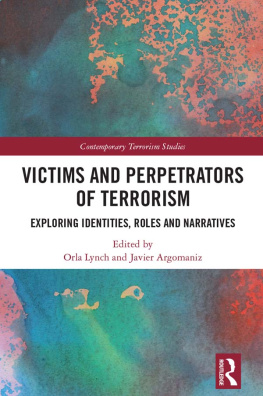

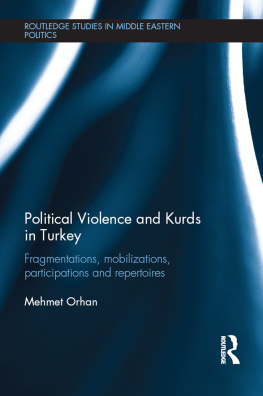
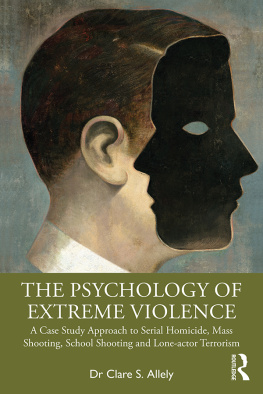
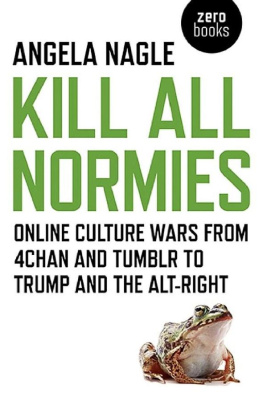

 The paper used in this publication meets the minimum requirements of American National Standard for Information SciencesPermanence of Paper for Printed Library Materials, ANSI/NISO Z39.48-1992.
The paper used in this publication meets the minimum requirements of American National Standard for Information SciencesPermanence of Paper for Printed Library Materials, ANSI/NISO Z39.48-1992.